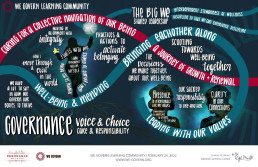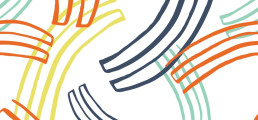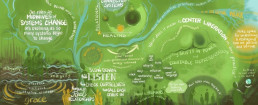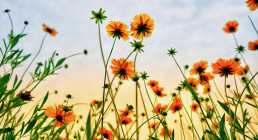Being in the humanity of governance, with all its messiness and joy
Reflections from the WeGovern Learning Community
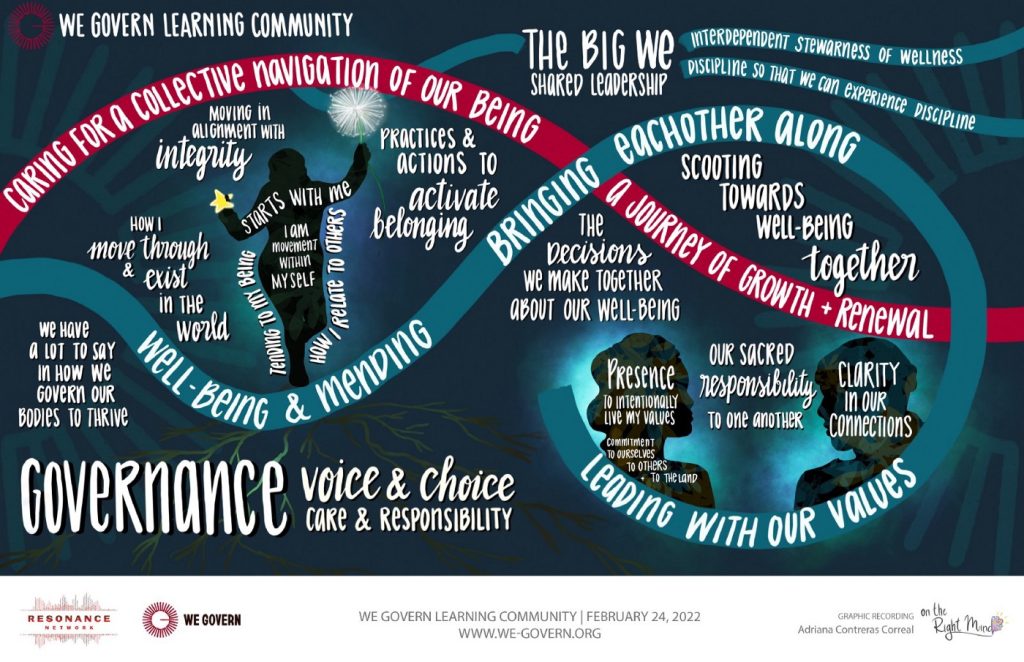
How do we build ways of being that uplift the collective dignity, wholeness, and thriving of one another and the lands we inhabit?
How do we build ways of being where our collective wellbeing is carried by community?
How do we create opportunities to live a happy life? To find joy?
WeGovern Learning Community participants are exploring these questions together–discovering what it takes to live into the WeGovern principles today, in our current realities and communities.
This is collective governance, and it takes practice.
* * *
In phase two of the WeGovern Learning Community, a cohort of new and returning participants came together with a shared commitment to collective governance–in practice, embodiment, and reflection. In their first gathering, cohort members delved into what governance means to them, and how it shows up in their lives. Here are some highlights from that conversation:
“I am a movement within myself.” ~ Monique Tú Nguyen
- I used to think there wasn’t a clear rhythm to the way I make choices–that it just sort of happened as things came up. But when I reflected on it, I realized I have a methodical way of making decisions–with myself, choosing who I spend time with and what I spend time doing, and how I care for myself and use my resources emotionally, physically, spiritually, and financially. That’s governance, and there is power in that clarity.
- At work, we have to be clear about documentation; there are clear pathways and decision making protocols–but how are we clarifying, for ourselves, the pathways toward decision making in our own lives, and in our interpersonal relationships?
We are stepping into the sacred responsibility of tending to our own being-ness
- If we are going to be in relationship and connection with others, we have a responsibility to tend to our own being–our own healing, our own growth. Everything else comes from that place–our practices, our placemaking, how we cultivate belonging, and how we become aware of our needs–and make choices to make sure those needs are met.
- It is the values and choices that I practice every day, in all the unfolding moments. I am choosing wholeness and listening and vulnerability
“When I think about the ways I engage with governance the most, it’s in the relationships I touch every day–my relationship with myself, my relationship with my dog, my relationship with my partner, and in my caregiving relationship with my mom, who has dementia.”
-Alexis Flanagan
There is power in visibilizing our governance practice(s)
- And it’s important to name governance as governance — to visibilize our practice, so we can bring people along
- We are cultivating a sense of responsibility for the way we move through the world. From the moment we get out of bed in the morning, how are we living our values? It’s so easy to let that process be invisible, but so important to bring it to light.
Governance is the gas pedal on the tractor
- If I imagine my life as driving a tractor, what’s accelerating me forward is my own choices. I want to move forward in alignment and with integrity, so that my thoughts and feelings and actions are all in harmony with each other. And I feel right with myself.
- Meanwhile, it’s important to make sure that I am being transparent about my choices in the world–because it’s not enough for me personally to just do the thing. If I don’t voice the value I’m living into, people may see what I’m doing but not understand why. We have a responsibility to bring people along.
“We are scootin’ toward the interdependent stewardship of wellness” -Aaron Spriggs
- Governance is about the big ‘we’. When we understand we as ‘all of us together,’ we consider the moves we make–and the way we impact each other–differently
- Governance is stewardship; it’s caring for the collective navigation of our beingness.
- Our decision making together brings in every part of us, and all of the ecosystems around us into how we’re making every single choice, how we’re moving through our days.
“I am honoring and orienting towards wellness and nourishment–and I practice that in how I speak internally to myself, how I choose to speak in a shared place, how I choose to navigate things like making food in my kitchen–all the choices I make that are interconnected with other people, that impact me and the people around me are all part of that building out into the world we want to live in.”
-Reese Hart
Collective governance is a discipline we choose, so that all people may experience dignity
- We are building strategies to prevent future harm while also taking time to imagine what governance looks like outside of the current structure we live in, that continues to cause harm
- To govern, you need to think about what breaks your heart. And also what you love–and that’s going to help you be who you are in the world. — Rose Elizondo
Governance is a lifelong journey
- Just as in nature’s rhythm of seasons, we are renewing ourselves constantly–our needs are not the same, moment to moment; our bodies are not asking for the same things
- Being able to be open and responsive in the natural ebbs and flows is part of governance practice–it is an ongoing journey of renewal and growth
Governance is the restoration of birthright
- All of us are part of a lineage–we are coming back into ourselves and our humanity, choosing and creating the life we want to live, with the people and beings we want to be with. Almost like we are revisiting our childhoods and getting to raise ourselves–we are deciding who we are, who we want to be, and how we want to relate to (and with) others. How we want to be seen.
- And the capacity for this is something we’re all born with–we don’t have to achieve or acquire; our capacity for governance is already within us. And the more we can see that, the less alone we feel.
“This enormous world I’m part of is always going to be big enough for whatever I evolve into.” -Yesenia Veamatahau
The stance, self care, investment, and spaciousness to be present to what’s happening around us. To step into the choices, in each moment, that enable us to live our values, we need to be present to connections, community, and portals–like the land. Land connects us to today, tomorrow, yesterday. We need to breathe into compassion, boundaries, and love.
We are learning to really be with ourselves–and witnessing the ripple effect that has on others.
Collective governance is rooted in Indigenous peacemaking and restorative justice practices, incorporating laws of nature and spirit.
Forrest Landry says that love is that which enables choice. And perhaps the same is true for governance that Dr. Cornel West says about justice–that it’s what love looks like in public. Governance is ultimately a collective practice–one we are delving into in times of deep uncertainty, isolation, and struggle. We are building when we need to most, the kind of governance we know is possible. Beginning with the choices we make today.
* * *
The reflections in this post were shared during the first gathering of the WeGovern Learning Community Phase 2. Just as the governance we practice, this discussion was a collective endeavor. Deep gratitude to all participants for their presence and contributions: Benjamin Carr, Reese Hart, Monique Tu Ngúyen, Crystal Harris, Ed Heisler, Sarah Curtiss, Leta Harris Neustaedter, Aaron Spriggs, Judith LeBlanc, Lonnie Provost, Brittany Eltringham, Heidi Notario, David Hsu, Adriana Contreras, Estefania Mondragon, Jenni Rangel, Ruby Mendez-Mota, Jovida Ross, Shizue Roche Adachi, Alexis Flanagan, Aparna Shah, Doris Dupuy, Kassamira Carter-Howard, Megan Shimbiro, Yesenia Veamatahau, Karen Tronsgard-Scott, Anne Smith, and LaToria White.
originally published at The Reverb
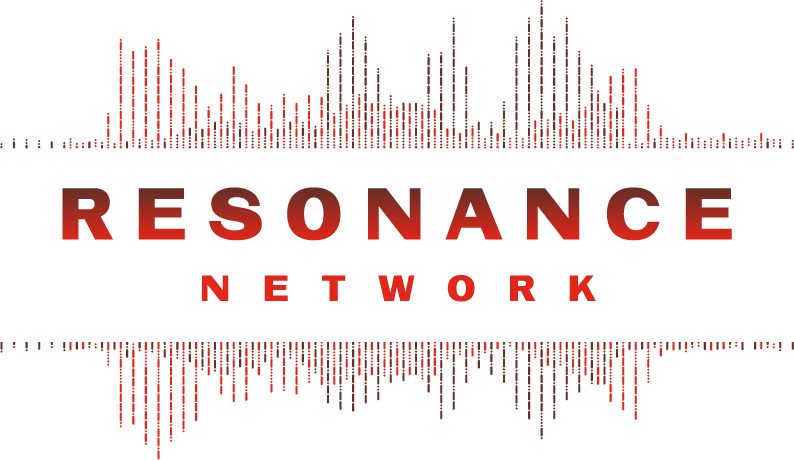
Resonance Network is a national network of people building a world beyond violence.

Network Weaver is dedicated to offering free content to all – in support of equity, justice and transformation for all.
We appreciate your support!
donate in the box above or click here
Failing Productively in Systems Change: Key Mindsets & Practices
This era of disruption requires us to take on deeper systemic challenges. As changemakers, how do we embrace failure as an inevitable part of the work of shifting complex systems? And how do we detangle it from feelings of fear that prevent us from taking the deep risks needed to advance real change?
We've developed tools, resources, and strategies to purposefully assist people in collectively taking on complex, systemic challenges. Our approach focuses on deepening engagement and building momentum to advance strategy and impact.
In this webinar, CoCreative team members Russ, Heather, and Luzette led a co-inquiry to deepen our shared understanding of productive failure, why it is important to systems change and the key mindsets that need to be challenged to do so.
We're deeply grateful to our friends at Tamarack Institute for hosting this important conversation.
Speakers: Russ Gaskin, Heather Equinoss, Luzette Jaimes and Sonja Miokovic
Download the slide deck we used in this session. We also invite you to explore these links to learn more:
- Read Lisa Attygalle’s paper Creating a Culture of Engagement which explores the fear we might feel when deeply engaging citizens in community change work
- Check out Fail Forward to develop skills in learning from fear of failure
- And get our two-pager on Embracing Failure in Systems Change


Download the "Embracing Failure in Systems Change" resource.
Included:
- Failing Productively in Systems Change webinar
- Failing Productively in Systems Change slide-deck
- Embracing Failure in Systems Change thinking tool pdf
Download HERE
originally published at wearecocreative.com
featured image found HERE

Network Weaver is dedicated to offering free content to all – in support of equity, justice and transformation for all.
We appreciate your support!
donate in the box above or click here
What is Network Weaving? - Q & A with June Holley
June Holley is a Wellbeing Blueprint signer who has been weaving networks, helping others weave networks and writing about networks for over 40 years. We recently sat down with June to define network weaving and help us understand how it can be a game changer in building our collective capacity to bring about social change.
Q: What is network weaving?
A: Network weaving is something that we all do. It’s paying attention to the relationships around you and noticing who’s missing, who’s not being listened to, and helping create healthier, deeper relationships. You do this by bringing new people in, by connecting people within your existing networks, and helping them get to know each other so they can work together.
Q: What is the difference between networking and network weaving?
A: When people think of networking, they think of passing out business cards to people at a conference and selling themselves. So networking is all about yourself. But when you move to network weaving, it’s about the community. It’s about the people around you and helping them build a network that can be capable of support and action. It’s a pretty different thing.
Q: What does network weaving have to do with building a country where everyone has a fair shot at wellbeing?
A: The concept of wellbeing is really complex and there are a lot of pieces to it. It might be about health access, it might be about creating a safe community. But before people can begin to work and co-create these kinds of things in their community, they need to know each other deeply. They need to be able to trust each other so they can work together. Working on the network and relationships is about creating the foundation, the fertile ground, on which aspects of wellbeing can emerge. So the more time you invest in building relationships, the easier it will be to work together on wellbeing.
Q: What’s one thing someone can do to start network weaving?
A: One of my favorites that you can do at every meeting you have is called speed networking. It’s a way to help people either get to know people that don’t know each other, or help to deepen relationships.
It goes like this: you ask people to stand up and find somebody they don’t know or don’t know well. And then you give them a juicy question like, “What’s keeping you up at night?” Or “What’s something about yourself that not many people know?” And you give them about five minutes to talk back and forth. Then you have the group come back together to debrief. You can ask them what made their partner a good listener. People will list things like eye contact, nodding, asking good questions, feeling really heard, etc.
Now that the group has established some guidelines for good listening, you ask everyone to pay attention to their listening skills in the second round. Then you give them another question, they go off and talk to somebody different this time. After the group reconvenes, everyone can share out the difference they noticed during this round. Often people will say they noticed themselves being a better listener and getting more out of the conversation.
There are lots of very easy, small things that you can do to interact with people in new ways that are much healthier and lead to much more effective and interesting actions.
Learn More
- For tools, resources and events, visit dev.networkweaver.com.
- For an introduction to June’s thinking around network weaving, check out her collection of posts on Medium.
- To ask questions and connect with a community, join the Network Weaving Facebook group.

You can also download a pdf with a link to this interview to save to your personal library by visiting the Network Weaver Resource Page.
Originally published at Wellbeing Blueprint

Network Weaver is dedicated to offering free content to all – in support of equity, justice and transformation for all.
We appreciate your support!
donate in the box above or click here
What do we mean by “community”?
Since the inception of Building Belonging, we’ve wrestled internally with this question: what are we? On our homepage we say we are:
A home for people committed to building a world where everyone belongs… We are a community of people working toward transformation and liberation: of ourselves, our societies, and the world.
And yet our gathering place is on Mighty Networks; so clearly we see ourselves at some level as a network as well.
So we’re a home. And a community. And a network. What does that mean, exactly? How do we organize ourselves? How do we make decisions? And as money flows through the system and we face the legal/financial imperative to adopt a structure… are we also an organization?
I don’t want to speak for Building Belonging here; we are in the middle of our second interim Stewardship Process, precisely to take a collective perspective on questions like this. But I did want to share my own intentions in case it’s helpful to others wrestling with these questions in their own communities/networks/organizations; I see this question as a key point of differentiation in the social change ecosystem that feels important to name.
1. I am interested in building a community, not an organization. I love this definition from
Aaron Goggans and team at Wildseed Society (which I see as a kindred initiative to BB):
We define community as a group of people with such important or valuable interrelationships that it is easier to have the difficult conversations than walk away. It’s a space where we agree to labor together to root out domination from our praxis and replace it with more liberatory ways of meeting our needs.
2. The kind of community I’m interested in co-creating is synonymous with the concept of “political home.” That is, it must contain two components. A “home”: a space of nourishment, resilience, support, safety, deep commitment to each other, and comfort. And it must also be “political,” meaning we are gathering in order to transform: ourselves, each other, and the world. It’s a space of stretch, of intentionally pushing ourselves to change material conditions in our community (as a fractal) and in the world.
There are other communities that are only or primarily about “home,” and communities that are only or primarily about “political.” Building Belonging — for me — is an effort to co-create a political home. Both things are essential. I resonate with how adrienne maree brown describes it:
Political home…is a place where we ideate, practice and build futures we believe in, finding alignment with those we are in accountable relationships with, and growing that alignment through organizing and education.
Yes! This is what I mean when I talk about Building Belonging as a “future dojo”: it’s a place to practice in the present… the future we long for. It’s prefigurative.
3. Communities require shared cultural norms. Absent direct deep relationships among all the members (which becomes impossible with growth beyond a certain point), structure is what codifies those norms: structure provides guidance on how we “be” together. It is the walls and furniture and doors that help people know how to navigate the community, where to sit, how we cook and clean together, etc. This is the space around “liberatory governance” that I find so compelling. And if we want to have any hope of co-creating the self-organizing future we long for… liberating structures are essential.
4. Communities require active leadership (I prefer the term stewardship). I love
Vanessa C. Mason’s reflections here:
Communities don’t just happen. They are intentionally built and stewarded by official and unofficial community weavers.
Yes: weavers inside and across communities. This echoes the core insights that
Fabian Pfortmüller has so beautifully captured in his work. Which means we will need people (in dynamic roles!) who are taking responsibility for stewardship. If we see Building Belonging as a commons, a fractal of the whole, than stewarding the commons is both a collective/universal responsibility, and a specific defined responsibility.
We aspire to self-organization, but it’s a long way from here to there. Humans aren’t yet a murmuration of starlings; we have to remember those skills, cultivate the capacity that’s been stolen from us. Until then, we depend on the contributions of stewards to create the conditions for everyone to step fully into community.
Alanna Irving is blunt on this point. She says:
There’s no such thing as self-organization. There’s only unseen, unacknowledged, and unaccountable leadership.
I love Parker Palmer’s 13 ways of looking at community (hat tip to Building Belonging member Sara Huang for pointing me to them):
Community requires leadership, and it requires more leadership, not less, than bureaucracies.
5. The kind of communities I’m interested in are also networks: people connected in diverse ways around a shared purpose. In this I’m drawn to the insights emerging from the network weaving community around how we cultivate connections;
David Ehrlichman’s new book on Impact Networks is a great overview of the field.
6. Community is a place to share gifts and needs; to thrive, everyone has to contribute. We all make community real in different ways. My gift might be for synthesis, for distilling and naming patterns amid complexity. Someone else’s gift might be holding space for conflict or big emotions; someone else might have a gift for art, music, or film: these are all equally welcome. Part of my hope for Building Belonging is to be able to create the conditions (norms, structures, culture, ways of relating) to enable people to step fully into their gifts; we aren’t there yet. I love
Deepa Iyer’s work here naming different roles in social change.
7. Community is the only sustainable form of support. I love this line from Esther Perel, commenting on this global moment of polycrisis and accelerated change, when our dominant systems are collapsing and we find ourselves unmoored:
Community is the only thing we have at this point… real life embodied experiences where people come together.
I’ve been thinking about this provocative line from Tyson Yunkaporta:
The only sustainable way to store [information] long term is within relationships.
I might expand that sentiment: it’s the only sustainable way to do anything. Buildings will crumble; the power grid will fail; the supply chain will break. The only thing we have to turn to, reliably… is each other.
Anyway, obviously lots more to say here, but wanted to put out some initial thoughts. I’d love to hear what resonates for others, what doesn’t, and how you’re making sense of this in your own lives and work.
In community (political home :-),
Brian

Brian Stout is a systems convener, network weaver, and initiator of the Building Belonging collaborative. His background is in international conflict mediation, serving as a diplomat with the U.S. Agency for International Development (USAID) in Washington and overseas. He also worked in philanthropy with the Bill & Melinda Gates Foundation, before leaving in early 2016 to organize in response to the global rise of authoritarianism and far-right nationalism. He recently returned to his hometown in rural southern Oregon, where he lives with his wife and two children.
originally published at medium.com

Network Weaver is dedicated to offering free content to all – in support of equity, justice and transformation for all.
We appreciate your support!
donate in the box above or click here
Energy System Science for Network Weavers: A Summary
“Culture is a verb.”
– Rowen White, Seed Keeper, activist and farmer from the Mohawk community of Akwesasne
“It’s all about how things are flowing.”
– Gwen McClellan, acupressurist and holistic healer
“A living body is not a fixed thing but a flowing event, like a flame or a whirlpool.”
– Alan Watts, philosopher and writer
“Seeing energy flows so that we can engage with them in positive ways is not some mystical, esoteric art, but the role of engaged human beings.”
– Joel Glanzberg, permaculturist and sustainable builder
Last week I teamed up with Dr. Sally J. Goerner, who stewards a transdisciplinary team of researchers and practitioners in the Research Alliance for Regenerative Economics, to offer an interactive session to The Weaving Lab on the Energy System Sciences and how they might support network weavers working for social change in a variety of contexts. Energy System Sciences (ESS) is “an umbrella term for disciplines that use the study of energy flow networks to understand the laws of systemic health, growth and development in living, nonliving and supra-living systems.” ESS disciplines include: Chaos, Complexity, Resilience, Ecological Network Analysis, Self-Organization Theory, Nonequilibrium Thermodynamics, Panarchy, and others. It was a lot to present and absorb and process during our short 2 hour session, and so I have made an effort here to summarize and simplify …
Everything is made up of energy, so says “western” science and also many wisdom traditions (think spirit or chi) and indigenous peoples (see Sherri Mitchell), but many of us often don’t like to use the word “energy” (too woo woo). And perhaps that is to our detriment! Switching from a “matter” orientation about everything to an “energy” view can help us see and do things differently.
Systems are complex networks of interconnected “parts” that work together. Flows of energy of different kinds are crucial for a system to function (carbon in the biosphere, traffic in cities, supplies and information during a disaster response, ideas and emotions in a social group, nutrients on a farm, money and other resources in economies).
The Energy System Sciences (ESS) see all systems as “flow networks” or structures that arise from the circulation of resources, information, nutrients, etc. Thinking through the lens of flow, systemic health can be seen as being based on things like: investment and re-investment of key and diverse resources, healthy outflows (not polluting or poisoning the ecosystem), the velocity and spread of resources in the system, cross-scale circulation, etc. The nature and quality of these flows determines how systems are able to adapt and evolve in healthy and health-promoting ways.
ONE BIG PROBLEM now is that there is a dominant narrative stemming from the power and influence of oligarchy (rule of and for the few) and oligarchic capitalism (economies that are run by and support the few), which seeks to increase the wealth of “elites” at the expense of most people and the planet. Narrative, in contrast to story, is a way of looking at the world. In a sense, it’s a big story that influences thought, meaning and decision-making. The dominant oligarchic narrative and view is grounded in things and beliefs like “the divine right of capital and kings,” a master/slave mentality, dominance, supremacy ( based on race, gender and other markers of identity), narcissism, coercive hierarchies, “survival of the fittest,” and self-interest.
The oligarchic view cuts against the evolutionary promise of the Energy System Sciences in that it gets in the way of the kinds and qualities of flows needed to keep the whole body of humanity healthy and in right relationship with the planet. It prevents pro-social and pro-ecological evolution. For example, at a smaller scale, if we only privilege a certain part of our physical bodies (our heads or brains) over and at the expense of other parts of our bodies (for example, our hearts, our guts), this can have damaging impacts for the neglected parts and our entire bodies, and diminish our intelligence. Science is increasingly showing that our hearts and guts give us access to important information about the world around us. And our health and development are being shown to rest upon more integration and coherence between the different biological systems that make us up (digestion, vascular, nervous, etc.).
Against the oligarchic capitalist view is another view of humanity as being a collaborative learning species that can ground itself in common-cause and cooperative culture (including values of equity, justice, fairness, trust, transparency, mutualism) and seek resilient and regenerative economies and other systems that guarantee long-term human thriving for the many and for the diverse and not just the few and the alike. This narrative and set of beliefs aligns with the Energy Systems Sciences. Together they suggest that to support healthy and health-promoting webs and flows, it is important for groups of people to integrate the following core pillars, economically (especially in the etymological sense of the word – “household management”) and culturally:
- Circulate diverse resources regeneratively, at and between different scales/levels
- Create and sustain flexible and resilient structures of different and balance sizes
- Ground in common-cause values such as mutuality, trust, transparency, equity, justice, fairness, accountability
- Engaged in collaborative learning that supports intelligently adaptive responses and actions
For example, as Sally Goerner lifts up the following (it may be helpful to click on the image below):

We can also bring attention back to our own selves and how we interact with others to see how the energy system sciences can guide us. We can have stagnant energy if we are not inviting new ideas in or not releasing emotions. We can quickly get overwhelmed if we open ourselves to too much energetic flow of information or emotion, especially if it is negative or challenging. If our bodies are not structurally strong and flexible, they can be more prone to dis-ease. If our social organizations are overly rigid, they can be un-responsive to change and unable to adapt accordingly. If we are not having honest conversations with one another, that “clear the air” (and move energy through as it needs to), we can get bogged down in unhealthy interpersonal dynamics. The emotional body language and tone we convey energetically can impact our interactions with others (and flow widely in larger networks!). If we are not attending to what is otherwise sealed away in our insides (which equates with dissociation) this can also have impacts on how we are with ourselves and one another.
Bottom line: We share a hope that many more of us can become adept energy and flow scientists, artists, healers, weavers and workers as we intentionally create patterns that are the basis of the better world we sense is possible and know is necessary.

About the Author:
Much of Curtis Ogden's work with IISC entails consulting with multi-stakeholder networks to strengthen and transform food public health, education, and economic development systems at local, state, regional, and national levels. He has worked with networks to launch and evolve through various stages of development.
Originally published at Interaction Institute for Social Change
featured image found HERE

Network Weaver is dedicated to offering free content to all – in support of equity, justice and transformation for all.
We appreciate your support!
donate in the box above or click here
Coaching for Awareness-Based Systems Change
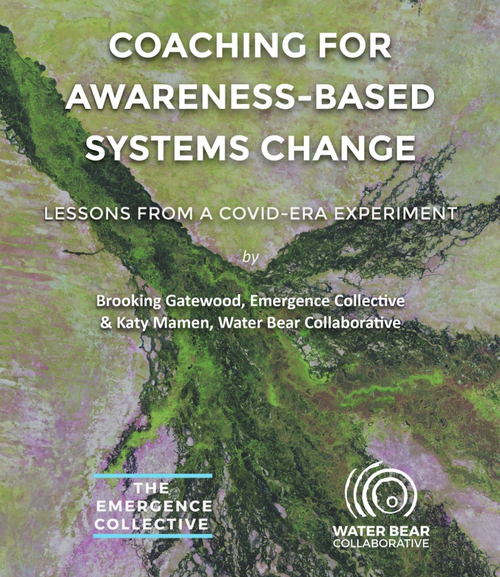
In the fall of 2019, a few of the founders of the Illuminate network (including CoCreative, Garfield Foundation, McConnell Foundation, and Academy for Systems Change) collaboratively hosted a gathering of systems change “capacity-builders” who work as independent consultants or in small collectives as facilitators and advisors, from the US, Canada, Mexico, UK, EU, and First Nations. This was the first time these practitioners had been invited to meet together with peers to share their perspectives on the state of the field. The North American contingent of the group continued on through the upheavals of the pandemic, meeting virtually in 2020 and 2021 to explore themes of equity and integrating health and healing into systems change practice, as well as launching a pilot pairing senior and emerging practitioners to explore what systems-centric approach to leadership coaching might look like.

CLICK HERE to learn more about this unique systems coaching pilot or visit the Network Weaver resource page to download the full article.
Check out the infographic below for some of the key insights from their COVID-era dialogues on the state of the field of systems change.
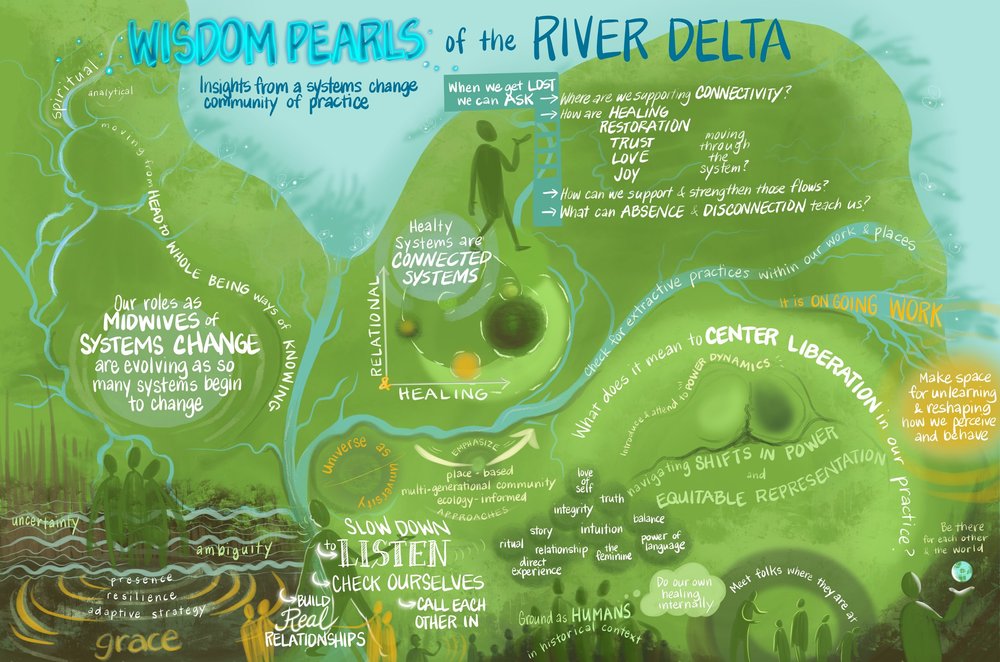
Learn more about the wisdom pearls HERE

You can also download a pdf with a link to this information to save to your personal library by visiting the Network Weaver Resource Page.

Katy Mamen is passionate about participatory change-making approaches that account for the complexity of multiple, interconnectedness crises and diverse lived experiences. She brings thoughtful and committed partnership to social sector clients advancing transformative systems change, drawing on expertise in social change strategy, facilitation and group process, systems theory, collaborative networks, and organizational development. In addition to process expertise, her work is informed by a strong background in economic justice, food & farming, water issues, and rural equity.
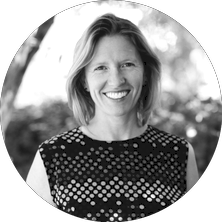
Brooking Gatewood helps leaders and groups clarify and enact the change they want in themselves, in their workplace, and in our shared world. At heart, her work is about co-liberation from systems of ‘power over’ and moving toward systems of ‘power with’ that honor individual agency as well as collective interests and wisdom. In practice, her coaching and consulting focuses on transformation across levels - from individual and team mindsets and behaviors to large-scale policy and systems change.
Originally published at IlluminateSystems.org

Network Weaver is dedicated to offering free content to all – in support of equity, justice and transformation for all.
We appreciate your support!
donate in the box above or click here
On Collective Liberation and Natural Networks: an Interview with LLC’s Nikki Dinh and Ericka Stallings
I was able to meet with the Co-Executive Directors of the Learning Leadership Community, an organization I’ve long admired for their commitment to a community-focused transformative leadership practice. This past year, LLC was able to return to a co-Executive Director model which has freed up both Nikki Dinh and Ericka Stallings to focus on shifting LLC towards a more liberatory transformative leadership model. Part of this shift involves supporting the ongoing work of Network Weaver as it provides tools and resources to scale up access to weaver spaces and serve as a platform that amplifies the impact of BIPOC weavers and leadership practitioners on their communities. More deep-rooted shifts involve the difficult work of making even more room for thinking about and practicing liberatory frameworks that make equity work within this system sustainable for people who come from othering backgrounds.
“We look at leadership as a tool for transformation. To say that we are “equitable” within this current system, which is in and of itself inequitable is not necessarily our goal. Racial Equity being a path towards liberation, that's the change that we're trying to seek.”
– Ericka Stallings
In this interview, we talk a little bit about both Nikki and Ericka’s vision for LLC, liberatory processes, how community is the first network we come into, and why the work LLC is doing matters right now. Nikki and Ericka’s responses have been edited for clarity, but all effort has been made to maintain the integrity and spirit of their words.
* * *
Can you talk to us a bit about liberatory processes?
Nikki: “Liberatory” is a why, but it's also a how for me, because it's not a destination. It’s not like race equity, where you can measure your way to a certain point in the data and then it switches over to being more equitable for certain communities. Liberation, collective liberation, co-liberation, however you want to see it, is going to be a forever journey. We’ve seen what it does to our community members when non-profits focus only on getting the data or policy right—there’s a disconnect. And so how we do it really matters to people. Ericka and I always talk about what it takes to make a movement or network whole. How do we get to just work in just ways? It's not the technical titles like executive director and weaver, though we need those too, but what we know from our experiences is that we need everybody--we need somebody like Ericka’s mom who will nurture you, and we need an aunt who is always keeping an eye out for all the resources and trying to connect people to them. The “how” stems from a deep love for people. We’re trying to bring some of that back, some of that love and care for each other while we're doing this really difficult work.
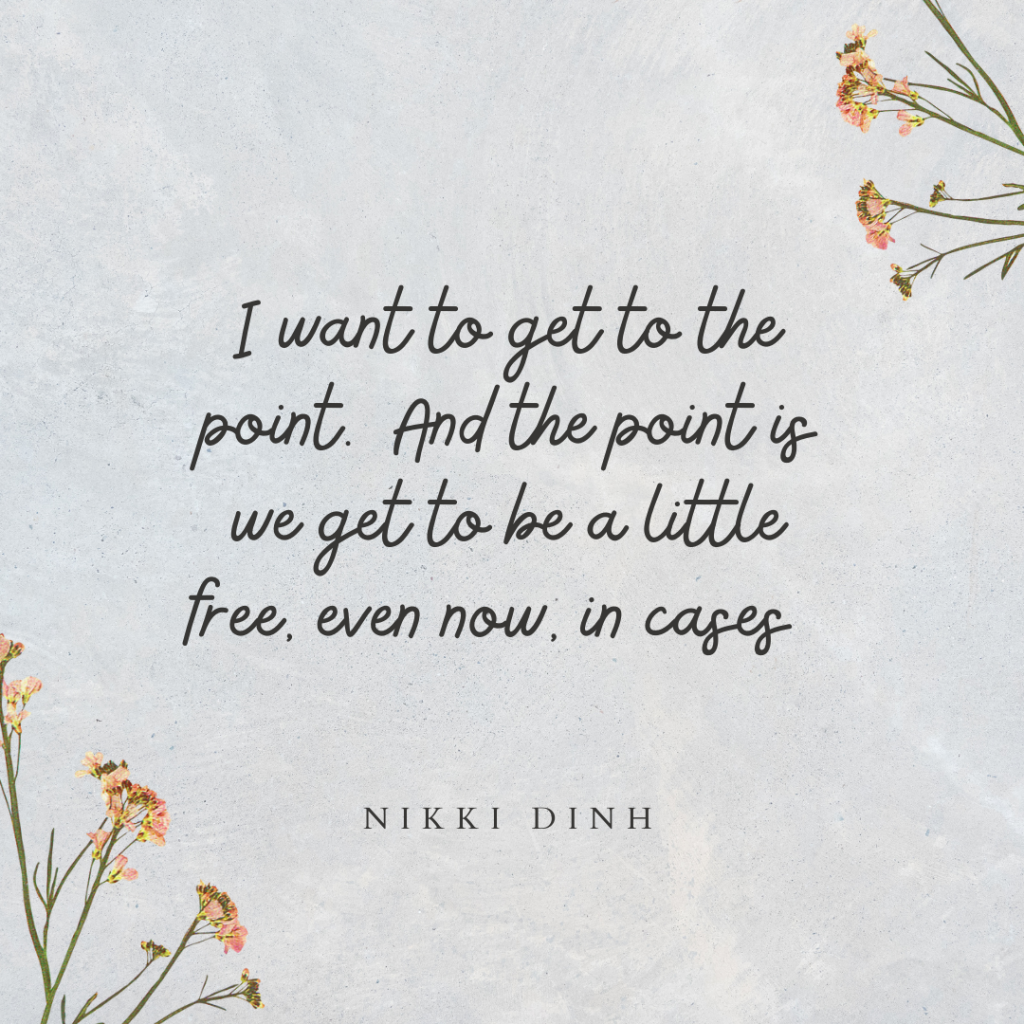
What's one thing that that Network Weaver, or even LLC is doing differently, to transform the field of leadership?
Ericka: We are shifting towards a different lens that asks: what does a collective liberation look like? What does it mean when we free ourselves and each other? That’s one change. We are also getting clear about what these questions around equity, liberation and transformation mean in different contexts. LLC is mostly domestic, whereas Network Weaver is international and therefore has a broader reach. Networks are not just interesting tools, but they actually result in change. How can we explore what a change ecosystem looks like and the role leadership plays in that? How can really thinking about the needs of varying stakeholders, and not just being focused on terms and buzzwords that are exciting, help us capture all the work that goes into the change process? How do we support the leadership of all of those other folks who are in that ecosystem? Holding space for those questions and others is one way I think we’re committed to doing things differently.
What is your vision for Network Weaver?
Nikki: Network Weaver is a tool and resource. Ericka and I have this analogy about pollination. In areas where bees and butterflies and all the natural super pollinators are dying off, there are efforts to self-pollinate or find other ways to pollinate. And that's why Network Weaver is so valuable to me. It's like an artificial butterfly. It’s trying to help solve a crucial short-term problem until we can get that butterfly population back up. It’s a useful tool to scale when we need to scale, but how can we also pay attention to what makes bees and butterflies thrive in the natural habitats because the goal always is to have natural networks. Growing up in a refugee community, we had a large cultural network and within that so many alternate systems to meet the needs of the community. You need to borrow money? You need prescription pills? There were people doing that for each other! I envision us also zooming out to see and appreciate a natural network of weavers that continue to connect and build alongside the Network Weaver space.
What's your vision for LLC?
Ericka: Oh, we have lots of ideas and hopes and dreams for LLC! Something that I hope doesn't change is that LLC is very relational. LLC is very people-focused, we care about people. It’s also a space that welcomes joy. And that's something we want to grow into. A vision that I have for LLC is that it is a space where people who want to lead in liberatory ways, and folks who want to support leadership that is transformational and liberatory, can collaborate. We are a space of experimentation, innovation, and community. I hope as a consequence of our work, that there are stronger movements for justice.
One of the things that I appreciate about LLC is that we are eco-centric rather than egocentric, which is something that our founder, my predecessor, used to say frequently, and I really value not having to make sure everyone knows that “it's us.” It’s more important that the work happened, rather than the credit be attributed to us. That focus on the communal, the collective, the ecosystem is something that remains part of the vision that I have for LLC. Our work has not just been about products and deliverables, but liberatory processes, and that has made the work fulfilling and joyful.
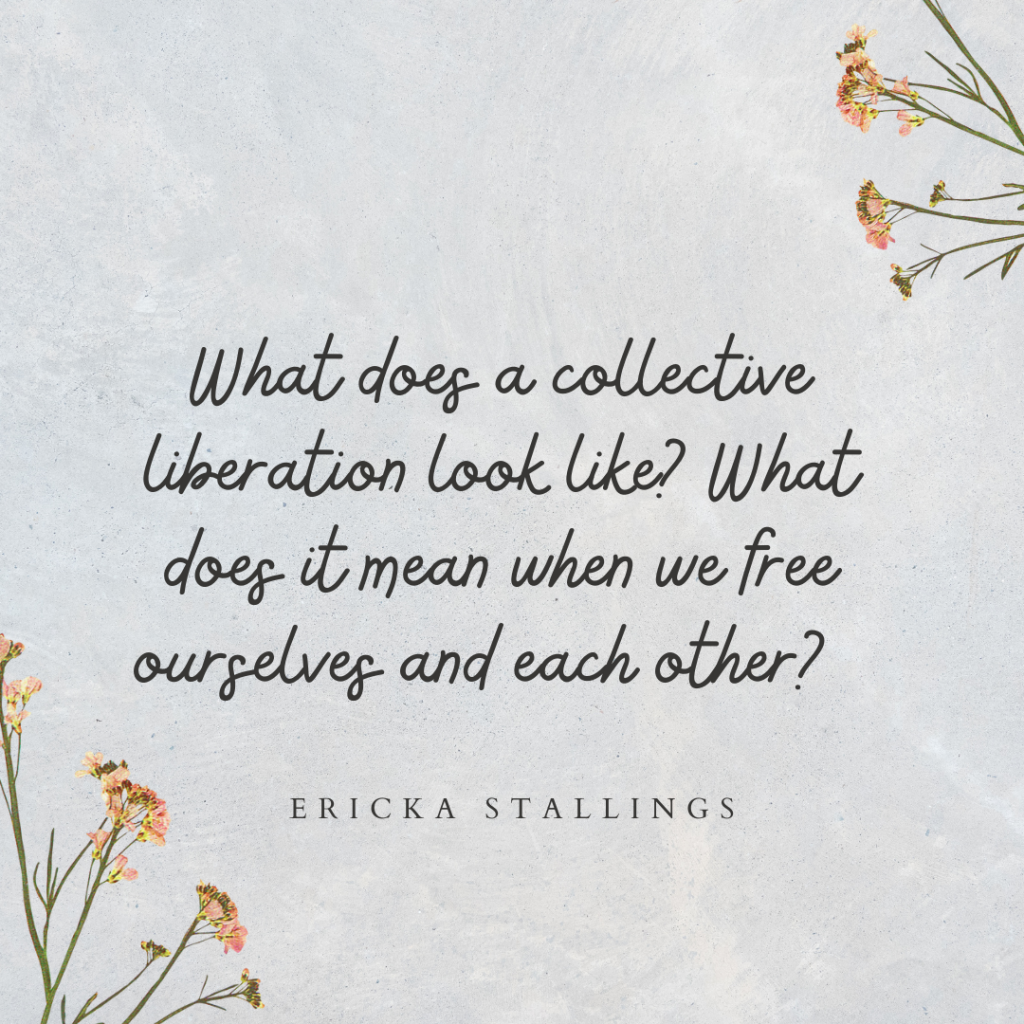
What’s a commitment you made to yourself during the pandemic that you intend to keep?
Nikki: I have made a commitment to root for me. It’s still a journey. I am surrounded by people like my sisters, my partner and my children, my collaborator Ericka, who think I'm so great. And I want to take on some of that energy and be like, I'm going to do it for me. And that's what has really emboldened me to be like, alright, look, we're doing liberatory work, we're gonna go there, because, you know, I was a lawyer—I know you can’t undo that kind of systems thinking overnight. I’ve had to work on this and believe in valuing this. And I've also known, because of my upbringing, that we can do better. So rooting for me is rooting for all folx entrenched in systems, for us to be a bit freer.
Ericka: One, I mean I have one commitment that I've made that is unexpected. And it's a group of women that I have coffee with, like virtual check ins with weekly.. We've been doing it since the beginning of the pandemic. The funny thing is we were not intimate friends before. We started this gathering to have regular conversations with agendas and learning goals and things like that, and they evolved or de-volved, depending on how you think about it, into very, very rich, deep emotional connections. I'm very proud and happy that I've continued to commit to these weekly check ins and also to those relationships.
Is there anything that you're like most excited for this year?
Nikki: We're doing some longer-term strategy work. In the next three to five years we will go bold with liberatory programming. Our lens for Network Weaver, for example, will be situated under the liberatory program side of the house. Everything we do will have to bring a kind of outside-the-system thinking which includes bringing in the perspectives and interests of people who are typically excluded from our systems. That said, I'm really excited to work with more people who are from other backgrounds, like refugees and trans folks, and queer folks, and people with disabilities. I have learned so much from people outside of our systems that I'm really excited for others to get that wisdom too.
Why LLC? Why Donate Now?
Ericka: One of my favorite quotes is: “if you give me a fish, you have fed me for a day. If you teach me to fish, you have fed me until the river is contaminated or the shoreline seized for development. But if you teach me to organize, then whatever the challenge, I can join together with my peers and we will fashion our own solution.”
With that in my mind, my hopes for the ongoing work of LLC and Network Weaver are in that vein; of prioritizing the people who are addressing issues in their communities and how folks in this space are supporting them. I'm hoping that the blog series we hope to launch soon will address how people are affirmatively and explicitly stepping back so that the people directly impacted come to the forefront. And I'm hoping these stories about the material, communal, and spiritual transformation that's happening help us see the real impact people are having on the communities they care about.

donate in the box above or click here

Ericka Stallings is the Co-Executive Director of the Leadership Learning Community (LLC) a learning network of people who run, fund and study leadership development. LLC challenges traditional thinking about leadership and supports the development of models that are more inclusive, networked and collective. Prior to LLC, Ericka was the Deputy Director for Capacity Building and Strategic Initiatives at the Association for Neighborhood and Housing Development (ANHD), supporting organizing and advocacy and leading ANHD’s community organizing capacity building work. Ericka also directed ANHD’s Center for Community Leadership (CCL) which provides comprehensive support for neighborhood-based organizing in New York City. At ANHD she formerly directed the Initiative for Neighborhood and Citywide Organizing (INCO), a program designed to strengthen community organizing in the local neighborhoods. Before working at ANHD she served as the Housing Advocacy Coordinator at the New York Immigration Coalition (NYIC), managing its Immigrant Housing Collaborative. In addition, Ericka co-coordinated the NYIC’s Immigrant Advocacy Fellowship Program, an initiative for emerging leaders in immigrant communities. She received her undergraduate degree from Smith College, studied International and Intercultural Communications at the University of Denver and Urban and Environmental Policy and Planning at Tufts University.
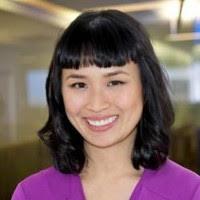
Nikki Dinh is the daughter of boat people refugees who instilled in her the importance of being in community. Though she grew up in a California county that was founded by the KKK, her family’s home was in an immigrant enclave. Her neighborhood taught her about resistance, resilience, joy and love.
Her lived experiences led her to a career in social justice and advocacy. As a legal aid attorney, she learned from and represented families in cases involving immigration, domestic violence, human trafficking, and elder abuse. Later, she joined the philanthropic sector where she learned from and invested in local leaders, networks and organizations throughout California. At Leadership Learning Community, she is excited that her work will continue to be guided by the belief that the people in communities we seek to serve are best positioned to identify and create solutions for their community.
About the Author

Sadia Hassan is a writer, organizational consultant and network weaver who enjoys using a human-centered approach to think through inclusive, equitable, and participatory processes for capacity building. She is especially adept at facilitating conversations around race, power, and sexual violence using storytelling practice as a means of community engagement and strategy building. She has received a Masters in Fine Arts, Poetry at the University of Mississippi and a Bachelor of Arts in African/African-American Studies from Dartmouth College. You can read more of her work at Longreads, American Academy of Poets, and The Boston Review. https://sadiahassan.com
feature photo by Lee 琴 on Unsplash
Networks: Resourcing Relationships and Interdependence for an Equitable Future Now
Networks for Equity and Systems Change
The events of the past year have made clear what many in and outside of philanthropy already knew: that equality in resource distribution is not equity, that much of what was thought impossible to change – telework policies, reporting requirements, fiduciary responsibilities – is suddenly possible, that what we need to shift big systems is interdependence (not codependence), and that what is needed for this shift to happen begins with strengthening our relationships with one another – as individuals, organizations, and communities.
Networks offer a structure for linking people and groups of people with a shared vision and shared values to build and strengthen the relationships necessary to shift big systems. By offering us opportunities to work together in ways that challenge us to build different understandings of and relationships to power and to each other, we are able to move in more interdependent and interconnected ways.
Many individuals and organizations – particularly those rooted in Black and Native communities, queer communities, and immigrant communities – have experience working in networks both rooted in and working to advance equity and justice yet are often not sufficiently resourced for this work. Other entities, including many funders, are bringing increased attention and resources to working in this way and yet these many groups that are poised to resource networks are still just learning about how to do so in ways that align with equity and manage disproportionate power dynamics.
In this moment of possibility for reimaging big systems to live our imagined future of love, dignity, and justice now, we are sharing some learning from a late-2019 gathering of nearly 70 network funders, practitioners, and participants about how network practitioners and some funders are nourishing and growing networks for equity and systems change.
An Experiential and Embodied Approach to Learning in Networks
The Networks for Equitable Systems Change gathering was co-created in partnership with Change Elemental, Uma Viswanathan and Matt Pierce at the Robert Wood Johnson Foundation, and a design team of network practitioners including Allen Kwabena Frimpong, Aisha Shillingford, Marissa Tirona, Robin Katcher, and Deborah Meehan. The group came together to engage with practices for building, resourcing, and sustaining networks. Together, we set out to learn about the following questions:
- How have funders and other organizations worked together in networks that promote equity and systems change?
- What are the barriers to resourcing networks for equitable systems change and what would it take to shift those barriers?
- What is the personal work and way of being needed to fully engage in networks, equity and systems change?
While desk research and interviews can be useful learning tools, we decided to take an experiential and embodied approach to learning about our questions. By bringing convening participants into the experience of network building in real time, we were able to create shared experiences that led to shared understanding about what it takes to build and sustain networks that can shift systems.
We can’t shift systems when we’re only touching one part of the elephant. We need spaces where the whole ecosystem comes together, bringing various perspectives that can give us a picture of the whole. Rather than host separate conversations with funders, intermediaries, and grassroots organizations, the gathering brought together many parts of network ecosystems to discuss how folks were experiencing power sharing within networks.
Below are some of the ways the experiential design of the convening – in addition to the deep expertise and knowledge that participants brought to bear – helped co-create our elephant and answer some initial questions about networks…
We Challenged Dominant Ways of Building Alignment through Rigid Frameworks and Definitions and Instead Reached Shared Understanding with Storytelling
Through experiential learning and storytelling, convening participants aligned on shared definitions for what we mean by a network as well as successful practices for building, sustaining, and resourcing networks.
With our design team, we co-created a learning network that engaged people with different access to resources, different kinds of power, and different experiences and roles in networks. We were concerned about bringing so many different folks together to talk about networks when we all were coming in with these different experiences, definitions, etc. We faced the same pressure points that networks face: how do we distribute resources across this group and compensate people for their time and labor? How can we facilitate more open discussions with transparency and deeper sharing among groups who have different priorities, expertise in networks, roles in the movement ecosystem, and kinds of power? Where do we need alignment and shared definitions and where should we hold generative tensions and conflict?
Initially, we considered aligning the group through some shared definitions and research in networks before coming together, but that process seemed time consuming and didn’t fully honor the wisdom in participants’ different perspectives and experiences. Instead of creating written definitions and a compilation of research to align participants on a common framework, we had attendees prepare spark stories – a short story that communicated their experiences and challenges in a network when working across funders, individuals, grassroots organizations, and other entities. Participants shared stories in small groups and each group created an image to show similarities and differences in themes across stories. The storytelling accelerated shared understanding in small groups and highlighted the multiple perspectives in how participants understand and experience networks.

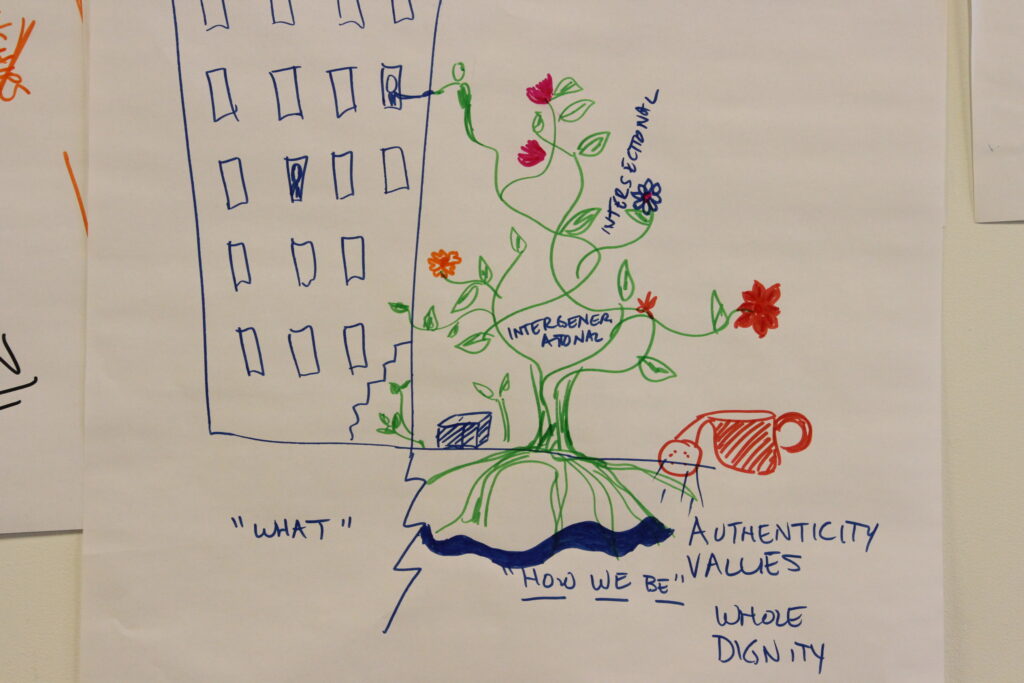
Many participants also shared their spark stories in video conversations. In this video, design team member Allen Kwabena Frimpong and Rachel O’Leary Carmona from AdAstra Consulting share their own definition of a network.
We Used Art Making to Illuminate Power Differences and Start Deeper Conversations about Power Sharing in Networks

Navigating power differentials – including naming and managing them – was a key element in supporting shared learning in this diverse space and also mirrored the ways in which engaging with power can create generative conflict that supports network building or exacerbates unnamed tensions that derail it.
At one point before the convening, some funders were feeling nervous about their power relative to other groups and considered having a separate space. We ultimately decided against that and instead brought funders together to discuss how we might acknowledge and visibilize power differentials (rather than obscure them). We also saw this as a way for funders to build practices for being in spaces where they have more power related to resourcing (such as in a network).
In an exercise from Theater of the Oppressed participants could make visible the power differences between funders that financially resource networks and other network participants. Participants positioned chairs differently based on their vantage point and each new sculpture was in dialogue with the previous one, creating space for different perspectives in support and in tension with each other.
In this spark story, Sage Crump, Cultural Strategist, shares her experience with power as an intermediary navigating the relationships between networked organizations and funders.
Starting with this creative exercise created a bridge to harder conversations about the barriers to equity in resourcing networks such as how money is distributed across network participants, inappropriate use of power, or challenges that come up when there is misalignment between the equity values of a network and the culture of a funding institution.
Convening participants Eugenia Lee of Solidaire and Rajiv Khanna from Thousand Currents discuss what it takes for people inside large funding institutions to align foundation culture with equity and other values needed to better support networks.
We Made Space for New Conversations about Resource Sharing and New Processes for Resource Distribution
Equity should inform how we resource people to be and learn together across power, identity, and roles and then to do together (in networks). Yet external systems, norms, and habits can often inhibit us from living out our values. One example of this is the radical redistribution of resources in neworks, which requires leaning into new practices for how we work together and support each other given our proximity to power and resources.
To financially support people’s attendance at the gathering and their contributions to the space, we created an equity fund. The set-up and distribution of the convening’s equity fund provided the group with an opportunity to lean into these new ways of being. It required vulnerability from participants in asking for what we need and for those holding financial systems to figure out creative ways of reducing the administrative burden on participants, for example by offering stipends rather than reimbursing receipts.
To guide us in these new (to some) ways of being and doing, we created a set of fund principles. Adapted from Leadership Learning Community, the principles included:
- People can ask for what they want and need
- Adopt an abundance mindset (we can always find a way to get more)
- Function with trust, no questions asked
- Give people examples of what they might use funds for (e.g., lodging, childcare, funds to cover a missed day of work for hourly professionals, etc.)
At first, people asked for very little. After more enthusiastic nudges and encouragement to lean into the principles and the discomfort of asking (for example, by looping back to confirm, clarifying our equity principles, and sharing more examples of what people have asked for) more participants felt comfortable asking for what was truly needed.
The initial hesitancy from participants prompted us to think more about who feels entitled to ask for equity funds and how that may relate to our individual sense of worth (eg. how much do I really need this?) and relationship to the collective (e.g., how much might others need relative to me?).
During the convening, we shared what we learned from managing our equity fund in this meme-filled presentation, including how we pushed for a “no receipts” policy, which was challenging to navigate from a compliance perspective but saved a great deal of administrative time.
In this spark story, convening participants Elissa Sloan Perry from Change Elemental and Alexis Flanagan from the Resonance Network share another example of resource distribution within a network, including the vulnerability and trust needed to talk openly about personal wealth as a way towards more equitable resource distribution.
While some of the experiential learnings from the convening are captured above, network practitioners and funders also brought together learnings from past experiences in leading with equity and navigating power differentials within networks including how funders operate in networks; the different forms and shapes networks might take; capacity, impact, and infrastructure needs in networks; and ways of being needed to build, resource, and support networks.
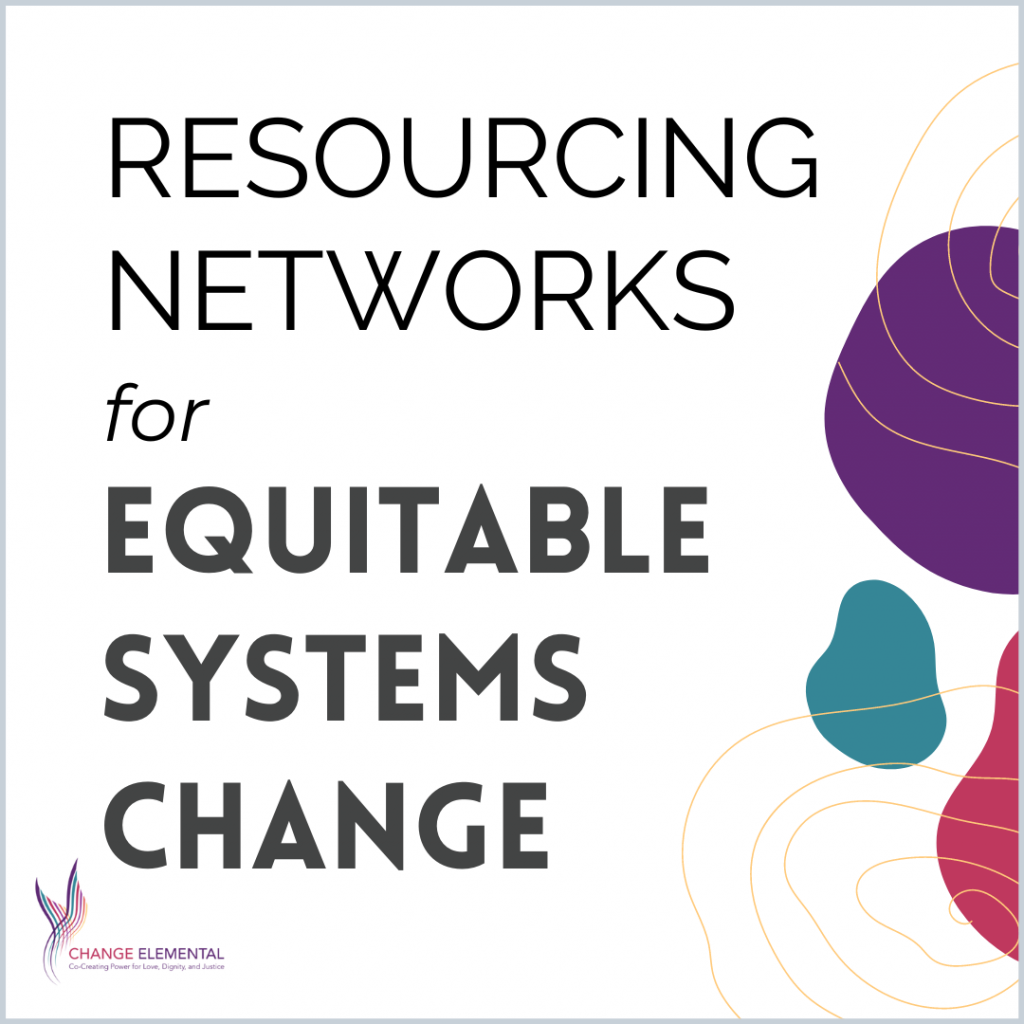
To dig into more stories and insights as well as many other resources about networks, see the report, “Resourcing Networks for Equitable Systems Change: Perspectives from Funders, Intermediaries, Individuals and Organizations on How We Fund and Support Networks for Equity.”
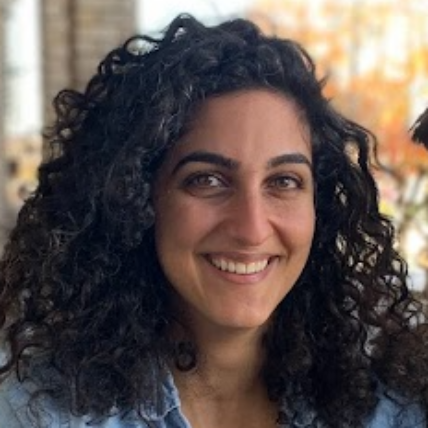
Natalie Bamdad (she/her/hers), joined Change Elemental in 2017. She is a queer and first-gen Arab-Iranian Jew, whose people are from Basra and Tehran. She is a DC-based facilitator and rabble-rouser working to strengthen leadership, organizations, and movement networks working towards racial equity and liberation of people and planet.

Alison Lin (she/her/hers) supports leaders in authentic collaborations to transform people and systems toward love, dignity, and justice. With over 20 years of leadership experience, she draws from work in race equity, complex systems change, organizational development, learning through experimentation and life with a focus on issues affecting LGBTQ and BIPOC communities. She joined Change Elemental in 2017.
Video recording, editing, and photos by Breathe Media Group
Graphic recordings by Brandon Black
Cover photo by Brian Stout
Originally published at Change Elemental

Network Weaver is dedicated to offering free content to all – in support of equity, justice and transformation for all.
We appreciate your support!
donate in the box above or click here
Inside philanthropy and networks
Collective Mind hosts regular Community Conversations with our global learning community. These sessions create space for network professionals to connect, share experiences, and cultivate solutions to common problems experienced by networks.

In July 2021, Collective Mind hosted a unique Community Conversation panel discussion about philanthropy and networks. The session featured experts who work across the philanthropic space and have deep experience with networks ranging from global and national to hyper-local levels and across the gambit of social causes. The panel included Heather Hamilton, Executive Director of the Elevate Children Funders Group; Hilesh Patel, Leadership Investment Program Officer of the Field Foundation; and Katie Davies, Manager of Strategic Networks Initiatives with Ignite Philanthropy.
Together, the panelists explored the most urgent topics on their minds as funders and funder organizers for social impact, and talked about the trends they’re observing within philanthropy as it evolves toward more progressive causes and systems-change work. The panel helped elucidate some of the mysteries behind philanthropic decision-making and strategy, and sparked conversation among participants about how networks can reimagine their approach to and relationships with donors.
Highlights from the conversation
Understanding the decision-making structures of philanthropies helps network practitioners see their work through a donor’s lens and ask themselves the questions donors need to have answered. According to the panel, grant seekers commonly overlook the disconnect between program officers (POs) and where high-level funding decisions are made. POs are engaged on the ground, hearing directly from leaders and impacted communities, and have a current view of how the field is evolving to help advise on strategy. But ultimately, the Board of Directors controls the purse strings and sets the strategic agenda, with POsimplementing their decisions. Boards often prioritize questions of financial risk when making strategy and investment decisions, as well as the potential for fiscal return or reward. Among the range of types of foundations, POs will also have different levels of autonomy and instruction and at times won’t have a lot of flexibility in what they can fund. For networks, this can be particularly challenging as the work and value of networks can be amorphous and long-term, presenting more perceived risk from a business point of view.
Furthermore, networks may not necessarily fall into the framework of how traditional Boards think of how change happens. By design, networks work collectively toward a goal or contribute to a solution, rather than being able to specifically claim impact as their own, which makes their value proposition less straightforward and tangible than programmatic outputs and numbers. To demonstrate impact for donors and stakeholders, groups will sometimes overclaim and attribute wins to their own efforts, which misrepresents the work and can undermine the notion of a shared purpose. This can muddle the message of how collective impact happens and its value. It is therefore both on networks to be thoughtful, effective storytellers and have strong mission clarity, and on donors to educate and challenge themselves on their conceptions of the role and value of networks to affect systems change and foster an enabling environment where change happens.
Effective philanthropy requires more and better Board education. At its roots, philanthropy assumes a binary between those doing work on the ground and seeking funds and support, and those with resources who make big decisions on behalf of social change work but have limited practical knowledge or experience of it. This dynamic is challenging to navigate and also problematic. More and more, POs are working to educate Boards, which are often composed of wealthy individuals, about social change and to create change within foundations on the inside. There is emerging interest in the philanthropic space to learn from and with communities of change and to become more responsive and accountable across leadership and decision-making. Networks can help POs in their efforts to push and educate leaders within foundations to understand more about movements, collectives, and networks, and how donors can be more effective partners for change.
One way this can be done is through measurement methods that are more true to life and the work of social change. Donors often miss that funding networks means that progress won’t always be linear or explicit. Not only can fixed metrics and reporting requirements put a burden on grantees and have undue influence on the work, but limiting impact work to spreadsheets and formulaic processes can drive artificial outcomes and stifle the chance to glean real learning and value. For some foundations, there’s a new effort to pivot traditional reporting requirements and formats to be more flexible, conversational, and focused on multi-directional learning. These processes reframe accountability to center what grantees and donors can learn from each other about how the field is evolving, what role they all play, and what progress is being made. Doing the work to understand why networks and coalitions are important leads to understanding the nature of networks and systems change.
Donors are also starting to embrace how the image and dynamics of leadership are shifting through the work of networks and movements. Whereas traditional leadership is marked by an individual with certain, often normative characteristics and the vision and actions they represent, networks and movements center the leadership of groups and shared efforts. In networks, there is often no one leader: leaders are pulled from different sections to be part of broader work, and the model and mission doesn’t prioritize individuals as leaders. These challenges to traditional notions of what leadership looks like both mirrors and goes beyond how the face of leadership is already changing generationally. Understanding networks for how they upend traditional leadership is another way to educate philanthropic Boards about collective action and collaborative leadership.
Miss the session? View the recording here.
Thanks again to our amazing panelists!

Emily is a seasoned nonprofit and social impact expert with 14 years of experience leading social justice organizations and programs from community to global levels. She specializes in program innovation and design, strategy and leadership, facilitation, and peer learning. Among Emily’s career highlights, she has served as Executive Director of a grassroots women’s rights and anti-violence organization in British Columbia, Canada; spearheaded global peer exchange networks and innovative women’s leadership programming; and designed cutting-edge participatory research about GBV in remote and Native communities.
Originally published at Collective Mind
Featured image found here
Appreciate Network Weaver's library of free offerings and resources?
Donate below or click here
thank you!
Reclaiming Choice and Agency in a Networked World
Welcome! We are happy you chose to open this blog post! In this article we will explore:
- The difference between choice and decision; and why awareness of choice matters - as a (fundamental) way to engage with life.
- Different levels of networks & systems and how to navigate the levels with agency.
- How to choose with your whole being - as a means to align your deeper values and actions.
- Exercises and prompts to practice choice as a capacity.
We believe that it can be of use to change agents, social innovators, system entrepreneurs, and curious minds. Most importantly: We invite you to choose to fully engage with the article and share your reflections with us. We have laid out some opportunities to do so on the way :)
So let’s dive right in!
Choosing to Decide
Each day we make numerous decisions, from what we consume, such as food and media, to how we respond to others and to our environments, and beneath all of these decisions are choices. Yet, what is the difference between a choice and a decision? A decision often implies reaching a conclusion you can act upon, in this process something is determined. While a choice implies an act of choosing between two or more possibilities. In this way, ‘choosing’ is a practice of continually aligning toward various decisions. If we zoom out we may see that choices are how we navigate through life and how we arrive at decisions. Let’s take a moment to ponder this.
What was the most important decision you made today?
And what was the underlying choice you made that led you to that decision?
Choosing and deciding are related processes, yes, but they are fundamentally different in their nature. Choosing is relational, it is a process of orienting ourselves towards something of importance, such as our personal values, and what we hold dear. Choices lay out possible paths and open up fields of opportunities. While, deciding is directional; decisions are the concrete steps we take on that path.
If we shift from considering the individual level of choice to the collective level, we can see that human actions are a dominant driving force for what’s happening, and going to happen, on this planet. From this perspective our actions may look insignificant at a larger scale.
But an easily overlooked perspective is that we are not passive consumers or bystanders in the course of history. There is choice and agency everywhere, in the seemingly small moments of our daily lives, in the conversations we have with loved ones, or in choosing, or changing, our careers. Each moment holds an underlying choice we can engage if we choose to.
Now, a common argument is that the challenges we are facing are so grand and complex - that it doesn’t really matter what I intend, do or think.
In this article we will flip this argument around: In a networked world, there is nothing that matters more than what you do. Not only for you and your immediate environment, but also for the world at large. What you do, in turn, is deeply embedded in the choices you make, as your choices shape your orientation toward life.
Engaging with choice can also foster your sense of agency. Agency refers to the ability to direct your own actions in a meaningful way. In the field of systems impact, agency is often the precursor to creating change within our immediate environment or the larger social context we exist within and care about. As we reclaim our sense of choice, we inhabit more of our agency, which in turn enables us to have a greater impact.
Before we unpack this more and dive deeper into the exploration on how to reclaim choice and agency, we invite you to do a little exercise with us, to connect with what supports your sense of choice and agency.
You can follow the steps below or use this mentimeter survey for guidance: https://www.menti.com/txm61jx7f7
(if you use the survey, we will anonymously keep track of the responses - and you can also read through the results of others for inspiration)
- Think of a current situation that frustrates you - where you feel you don’t have choice or agency. This can be something in your immediate environment - or a larger social issue. How would you describe that situation? What emotions are present for you? What is the root cause of your frustration?
- Now, think of a moment in the past where you felt similar, but then experienced some sort of breakthrough - a moment where new opportunities emerged. Enter that moment now. Take a few deep breaths and observe what shows up for you - in terms of images, emotions or intuitions.
- Now consider, what made that breakthrough, that shift, possible? Note down a few words, lines or images.
We will return to this exercise at a later stage in this article.
Agency in a Networked World
We all exist in webs of relationships, which are the most basic form of networks. Networks exist within and around us. In nature we see networks of mycelium, mushrooms and fungi; the internet is a network of networks consisting of computers, routers and webpages. If we consider our bodies we can see that even our brain is made up of neural networks and synapses. Networks show us that it is important to focus on the individual elements as well as the relationships between them.
In essence, referring to our world as “networked” mainly means four things:
(1) We are part of more networks than ever before. Just count the number of initiatives, groups and organisations you are connected to - and compare it to the generation before you.
(2) the networks we are part of are larger in scope than they have ever been. Technology, mainly the internet, has made it possible to decouple social connections from physical proximity, at least to a certain degree.
(3) The networks themselves are connected. what happens within one network impacts others, for example a traffic jam or delayed trains in a transport system can lead to people being late to work.
(4) The networks we are part of, or deliberately not part of, shape our identity and actions. In turn, we also shape the identity and possible actions of these networks, yet usually to a lesser degree.
Let’s explore one aspect further: having agency within a networked world. To distill things a bit, we can say that there are three major levels of networks. For simplicity's sake, moving forward, we will use the terms “network” and “system” interchangeably.
- Individuals: Human beings in their full complexity and wholeness
- Intermediary institutions: Systems we can belong to and that we can shape, e.g. a family, sports club, impact network, or organisation.
- Societal systems / institutions: governments, the financial sector, etc.

Now, there are connections within each system, e.g. between coworkers of an organisation; between systems of the same level, e.g. organisations within an alliance; and between systems of different levels, e.g. an activist group trying to influence a policy.
We each will have varying degrees of agency in relation to the three levels of networks mentioned above. For example, personally fighting financial injustice, individual level, by ignoring letters from the financial department, societal level, is not the most promising strategy. As individuals, we usually have very little leverage over societal institutions and matters. However, joining an organisation, an intermediary institution, that creates financial literacy among disadvantaged groups and lobbies for policy changes, might actually work.
With an awareness of each level it becomes easier to choose which level and interaction you say yes to and no to. Choices are an opportunity to lean in and engage with the networks within and around us. Yet we may often jump to decisions without being aware of the choices that are available to us. This awareness, from our perspective, is the first step towards reclaiming choice and agency.
Choice for Impact
In engaging choice for creating systemic impact, a key question is: What’s the issue or vision I want to contribute to? To achieve that, what is the relevant system that I want to change, and in which direction do I want to change it? Let’s apply what we’ve learned so far, by drawing on the concepts of choice and agency as well as the three levels of systems. To make this more tanglible, you can bring to mind the situation that frustrates you from the initial exercise, and take a moment to think about the societal issues that underlies it.
To move from inertia to agency, we see four levels of choice.
The first choice is about living into your values and allowing yourself to take your inner compass and drive for social change seriously. This can be in relation to a social issue or external “trigger”, such as observing environmental destruction or diversity loss in your area.
The second choice is to think systemically and be strategic, asking the question: what is the relevant societal system I can engage with in relation to this topic? This choice is context dependent and will vary depending on where you live, the resources you have access to, and which systems may be standing in the way of it becoming a reality. For example, there may be a larger societal system that needs to be shifted, such as the energy supply system with its given sources of energy and the extraction of these resources.
The third choice is to engage my agency and seek intermediary institutions to engage in. It’s a choice to be proactive about changing the status quo with an attitude of both realism, “we should do something or else..”, and optimism, “there is something I / we can do”. Taking the example of climate justice, this might result in joining an energy coop or an activist group to influence politics.
Lastly, the fourth choice is to remember the choices above and embody them with joy and a sense of optimism. We can only be effective change agents if, to paraphrase Gandhi, “our lives are our message”.

Our modern day and age provide us with the unique opportunity to use network effects on a global level to contribute to causes we care about. The Four Levels of Choice can serve as a general orientation, acknowledging that it’s rather circular and interdependent than linear in its application.
Another way we can understand the levels of choice is through imagining an iceberg. Part of the iceberg is above water yet the majority of the iceberg exists beneath the water's surface. The part below the surface represents our values, beliefs and mental models, while the part above the surface represents our behavior and actions. Choice is how we align what is beneath the surface, with what is above the surface, therefore aligning our values with our behavior and actions.
We invite you to go back to your personal situation and example, either for yourself or in the mentimeter survey: How can you relate differently to move from frustration to agency? What are the underlying choices you have?
To give the topic more depth, there are two additional perspectives we’d like to explore, starting with ourselves and the choices we have within.
Choices within
Choice is in essence a process of alignment. At the deepest level choice can be seen as aligning with life, both in a general sense and in the present moment. Through choice we can also engage the intelligence of our body, our senses, organs and our imagination, in noticing what arises in response to a particular direction. Upon waking up in the morning, you can ask yourself ‘what am I choosing today?’ and then notice what arises, not only in the realm of thought, but also through sensations, images, textures, sounds and other experiences. Over time, by cultivating an awareness of how we respond to a given direction, we become able to choose more fully from our whole being and find greater alignment in our subsequent decisions.
At one level these choices within are momentary. They can arise through what we give our attention to, how much we open ourselves to experience something, and how much context to bring in and share with another. Choices can also span time and serve as a north star. For example, choice can manifest through a sense of calling, something we choose again and again that moves us closer to a dream we have for the world. As such, choice becomes the fuel for moving forward. Choice in that sense is an ongoing journey. As we pursue our calling we can reflect on the values we are choosing to enact and the principles we are choosing to embody in service of those values.
Here are some guiding questions to work with choice as an ongoing journey and a calling:
- What is so dear to you that you are willing to choose it over and over again?
- What is choosing you? What are themes you repeatedly run into?
As stated earlier on, our choices reveal our basic attitudes, beliefs and feelings toward life.
Choices underlie our decisions; they move us from thought into action.
Choices in Impact Networks
Yet there is still another dimension of choice, namely within networks or intermediary institutions. We can see these choices through the levels we outlined above as well as in any context where we exist in relation to other beings. An example of this kind of intermediary institution is an impact network, a network that is intentionally created...
Here we can see that there are two fundamental dynamics at play.
In the first dimension such a network coordinates and synergizes individual actions around shared principles and a collective purpose that individuals have chosen to participate in. The purpose of the network may not mirror the individuals’ purpose, however there is usually a synergy between the individuals’ purpose and the purpose of the network.
In the second dimension, impact networks support and carry out collaborative action and learning for deliberative change on social and environmental issues.

Choice shows up in each of the two dimensions within an impact network:
Dimension 1 is about choosing how to create the best possible conditions to engage network members. This requires the network to provide incentives to individuals to actively engage, and at the same time recognise the overall purpose and strategy of the network. For example, establishing rules around membership and criteria for internal decision making.
Dimension 2 is about choosing how to relate proactively to the societal issue and its related system(s). Impact networks, therefore, are an ideal testing ground to practise agency and choice in an intentional way.
Practicing Choice
We’ve seen that the decisions we make are often preceded by an underlying choice we’ve made at a conscious or subconscious level. When we connect with the dimensions of choice we can connect with a greater sense of agency in our immediate context and within the larger systems we are a part of. This awareness, in turn, supports us to become more intentional and impactful in the decisions we make and actions we take.
Choosing is also a capacity that we can cultivate through practice. Throughout each day we can notice the choices available to us and choose to engage our choices consciously. Awareness is the first step. We can practice recognizing the choices we have in the moment as well as the different dimensions that we can engage our choice in. Choosing deliberately increases our agency - the ability to direct our own actions in a meaningful way.
Choices help us to orient ourselves towards the world we wish to create- with all its complex challenges.
It’s a practice, like building a muscle or learning a new skill.
With this article we hope to provide an accessible framework to rethink and reclaim choice & agency, to invite each of us to begin to practice engaging the choices we have, from the large, to the seemingly mundane or small.

The following worksheets are designed to support you in that practice:
- Choosing for impact (4 steps)
- Choosing with my whole being
- Choosing and being chosen: exploring our north star
Download all 3 worksheets in one package HERE
Happy choosing! All worksheets are under a creative commons license, so feel encouraged to invite friends, colleagues and whoever comes to mind into the practice.
About Elsa & Jannik - the authors
This article is a co-creation in the truest sense. We noticed early on in our explorative conversations that we share interests and perspectives on many topics, such as impact networks, creating and evaluating systemic change, and capacity development. We also recognised our complementary backgrounds.
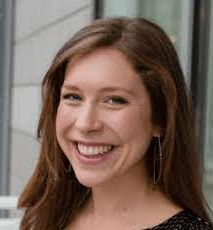
Elsa Henderson is a practitioner at the Converge Network and faculty at the Metavision Institute. She moves between the roles of network consultant, facilitator and educator supporting individuals and groups to deepen their capacity to collaborate for systems impact and find meaning even in the midst of uncertainty. Her background is in process-oriented psychology and anthropology, with an interest in phenomenology, systems thinking and consciousness studies.

Jannik Kaiser is co-founder of Unity Effect, where he leads the area of Systemic Impact Evaluation, grounded in the knowledge that evaluation can be participatory, meaningful and energising. His background is in sociology, with a continuous passion for complexity science, phenomenology and asking fundamental big questions about life.
In our conversations, we also allowed our minds to wander and our intuition to speak. In the end, it felt more like the topic of choice ‘chose’ us. And we could feel the depth and richness in it that is calling for further explorations.
To give one example: The image of the iceberg and choice as a process to align our values and principles and translate them into action. This aligns with the three levels of reality process-oriented psychology, namely (1) consensus reality, (2) Dreamland (inner worlds & imaginations) and the (3) Essence level (the non-dual pre-manifest field of ‘implicate order' as coined by Bohm. It also fits with Ken Wilber’s AQAL model, according to which each system has an interior (invisible) and exterior (visible) dimension.
An interesting exploration could be how individual and collective choices are connected. The iceberg is swimming in a vast ocean of water. Similarly, our individual choices are embedded in what we could call consensus reality or culture. Yet this consensus reality is currently being questioned, and the topic of choice could inform how we transition between such collective realities.
So stay tuned, there might be more coming up.
originally published at Unity Effect
Appreciate Network Weaver's library of free offerings and resources?
Donate below or click here
thank you!
